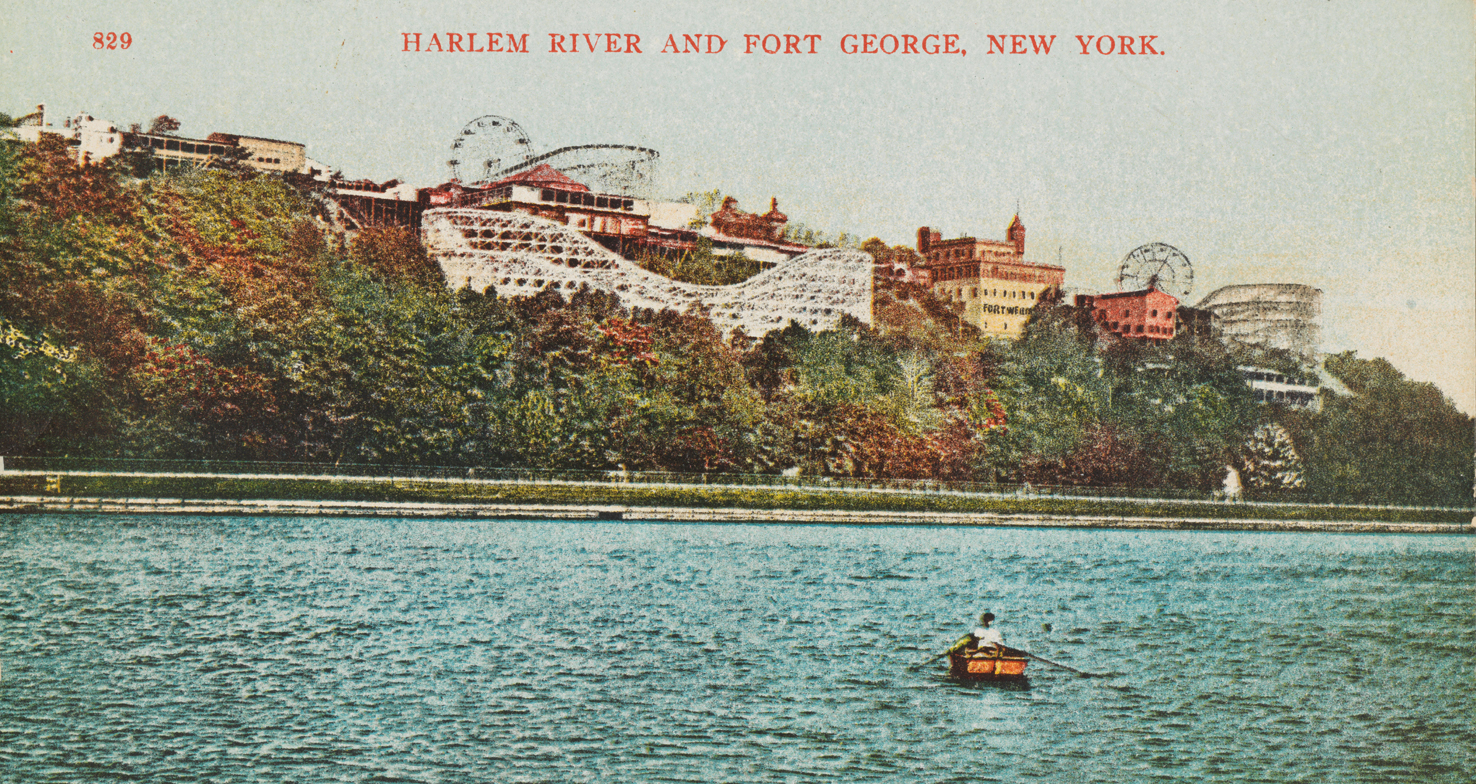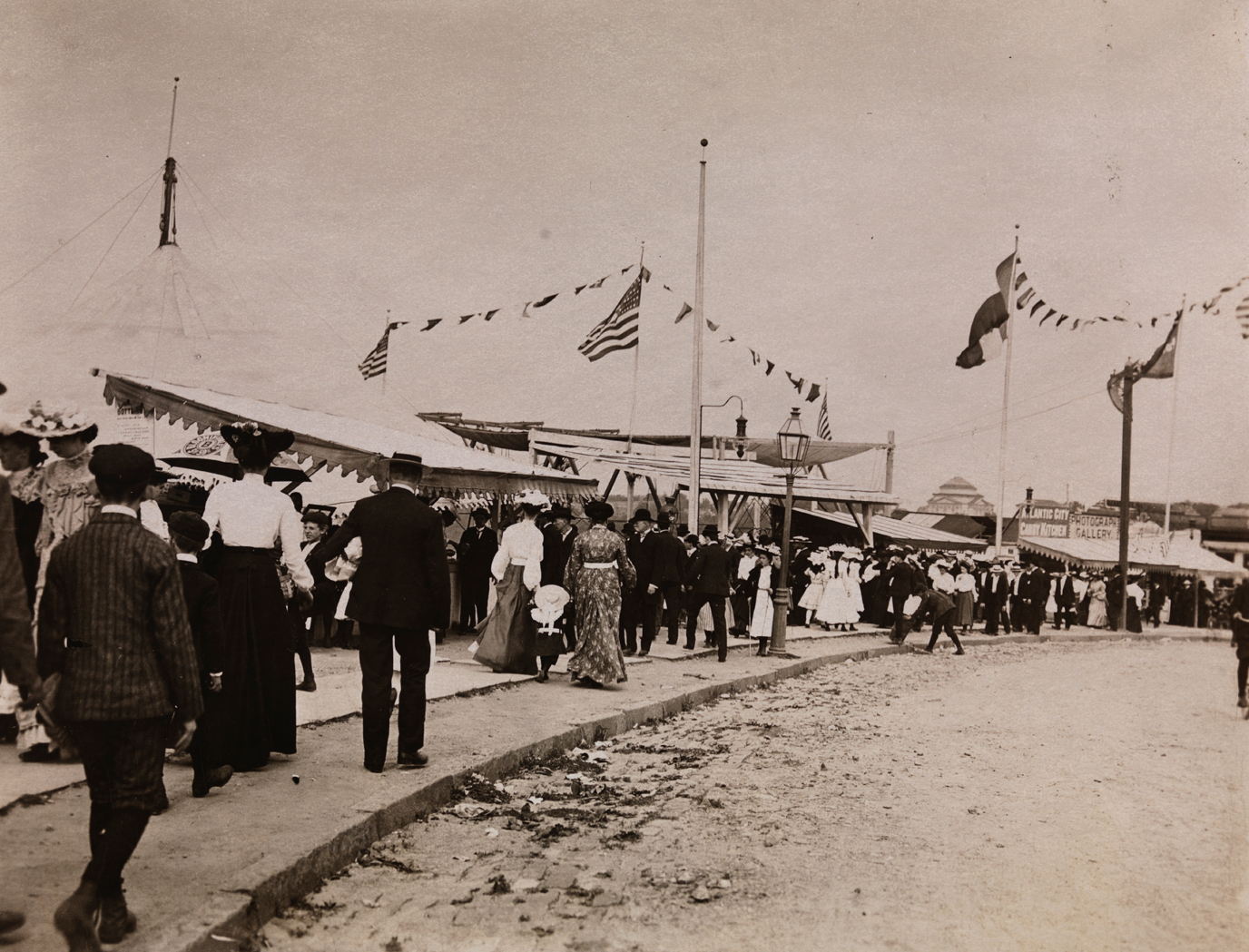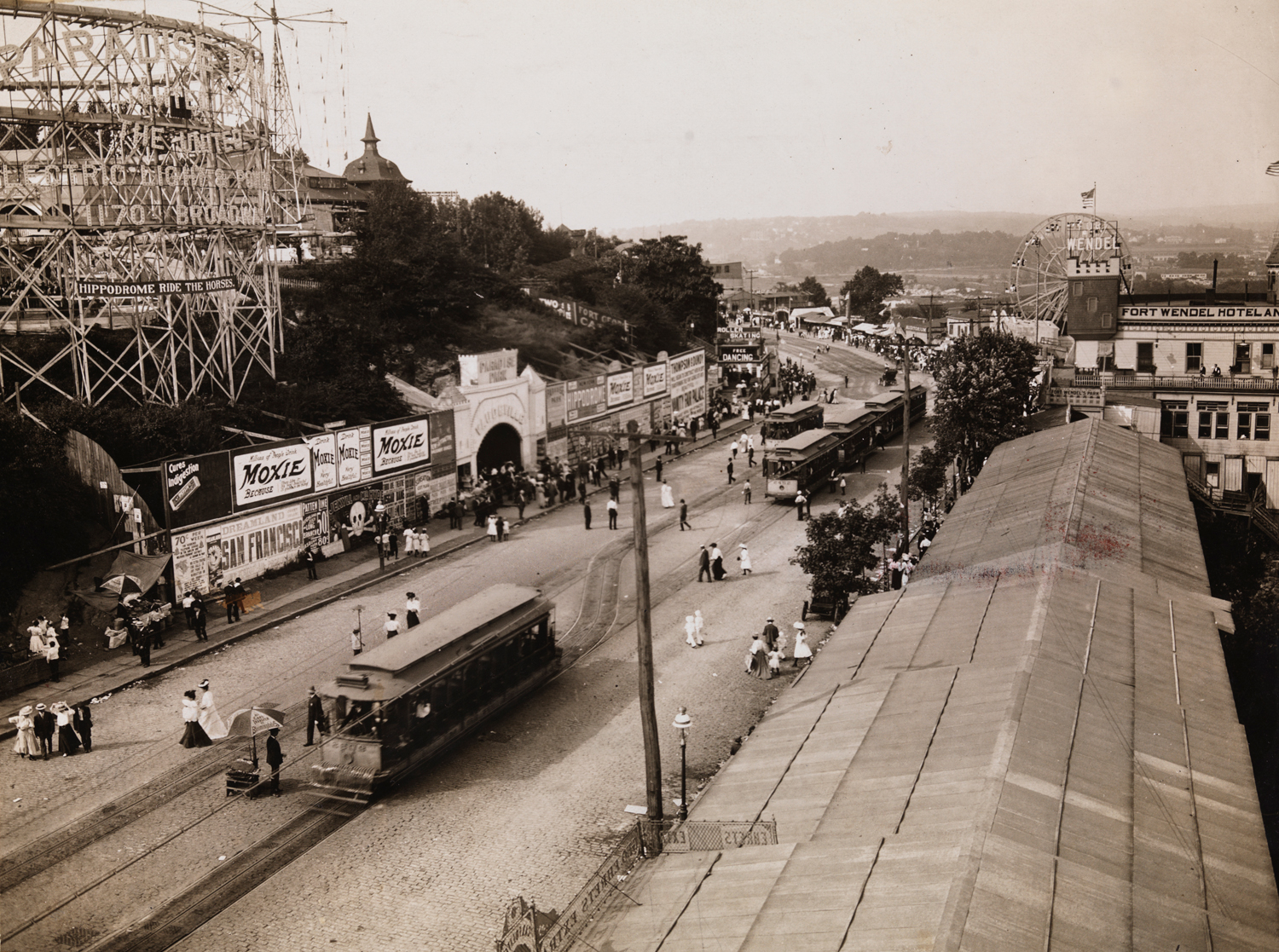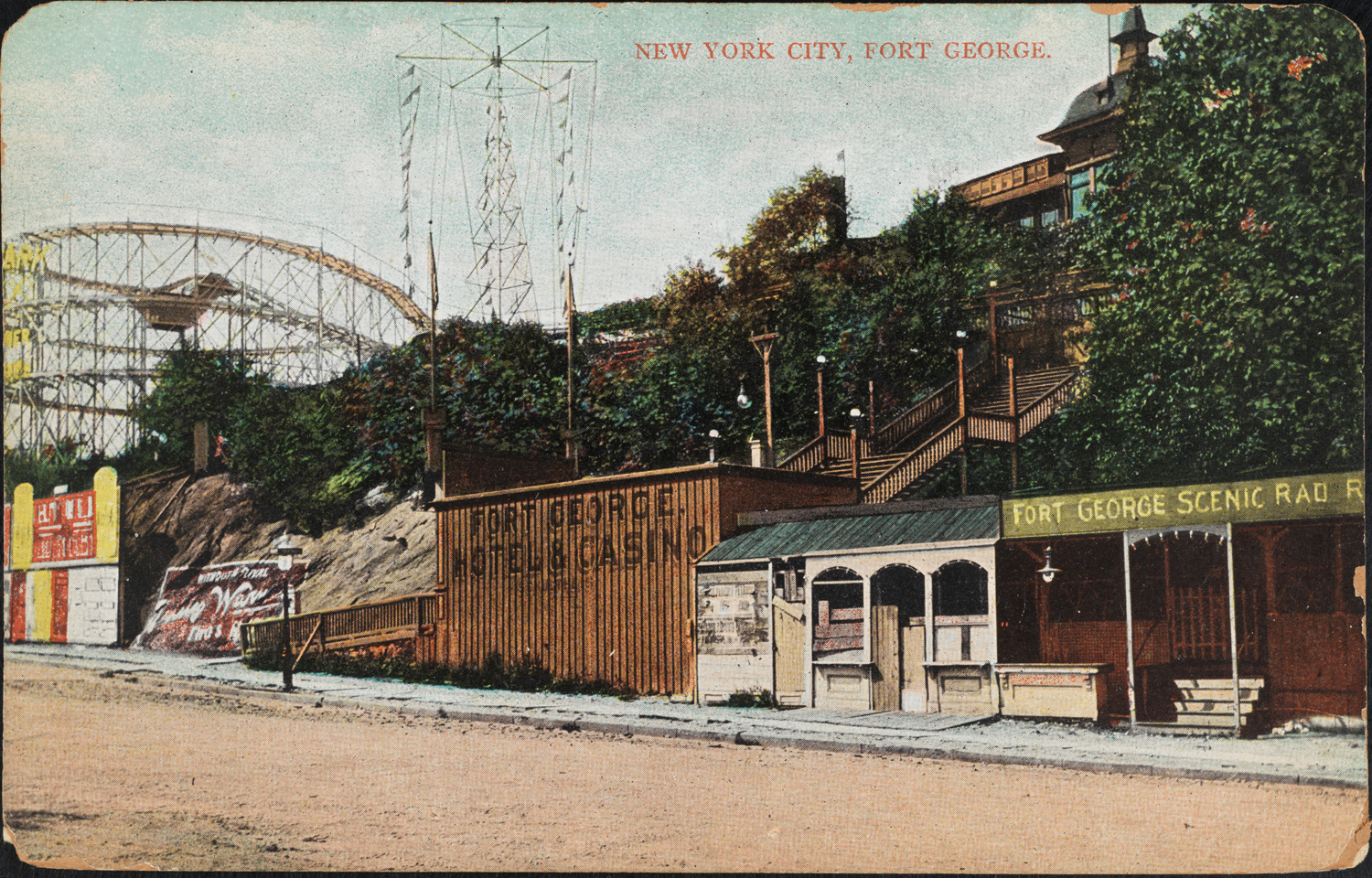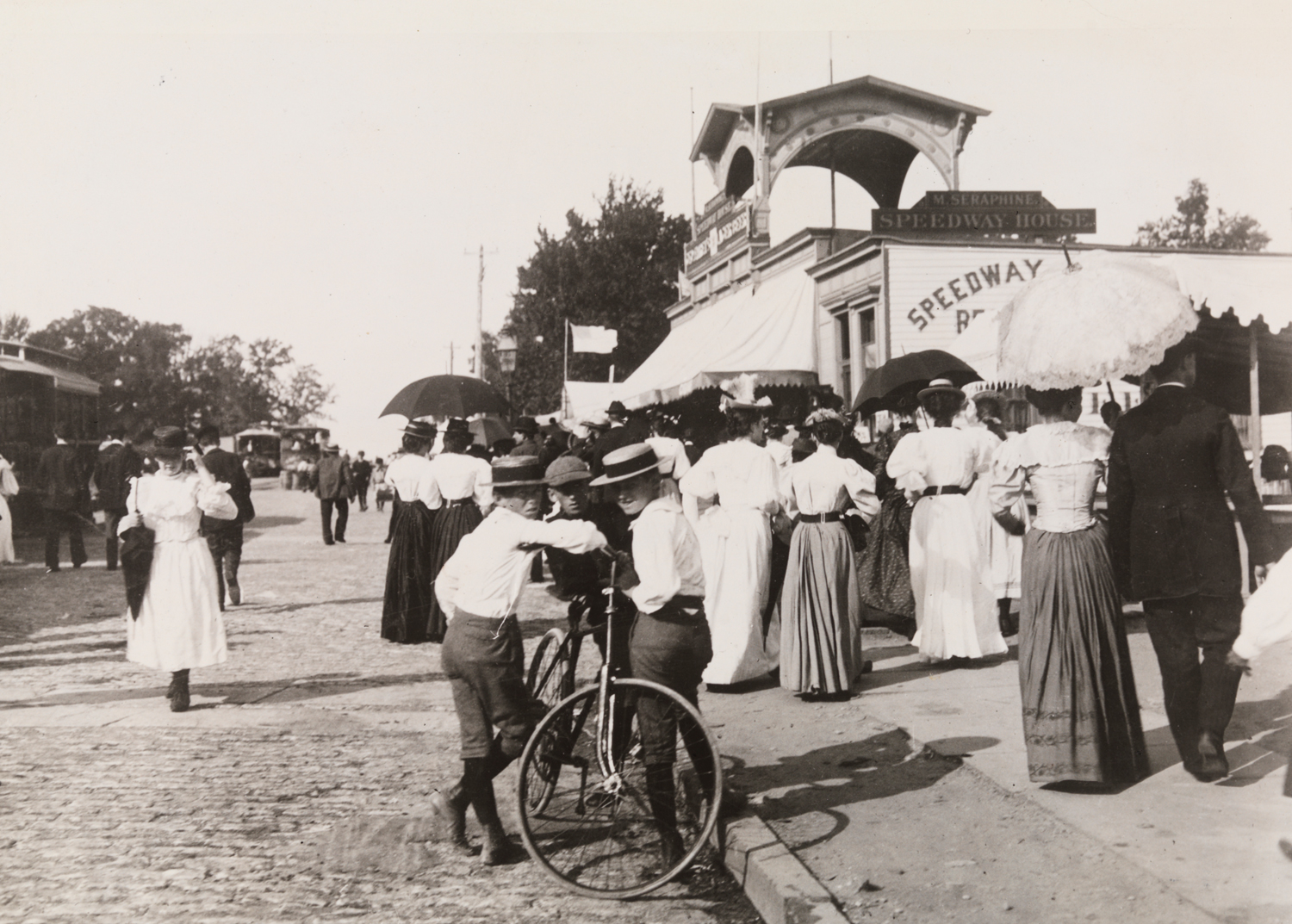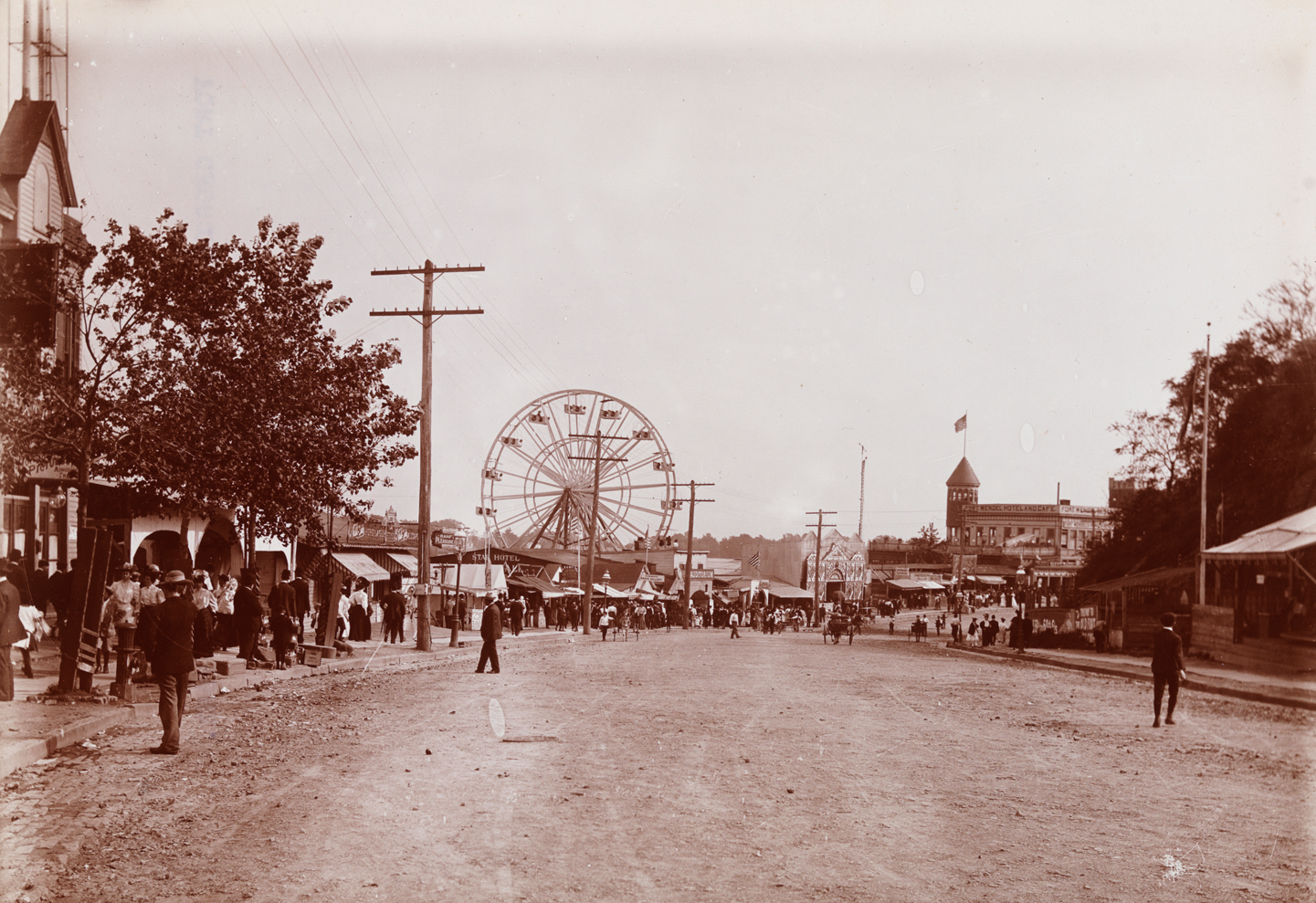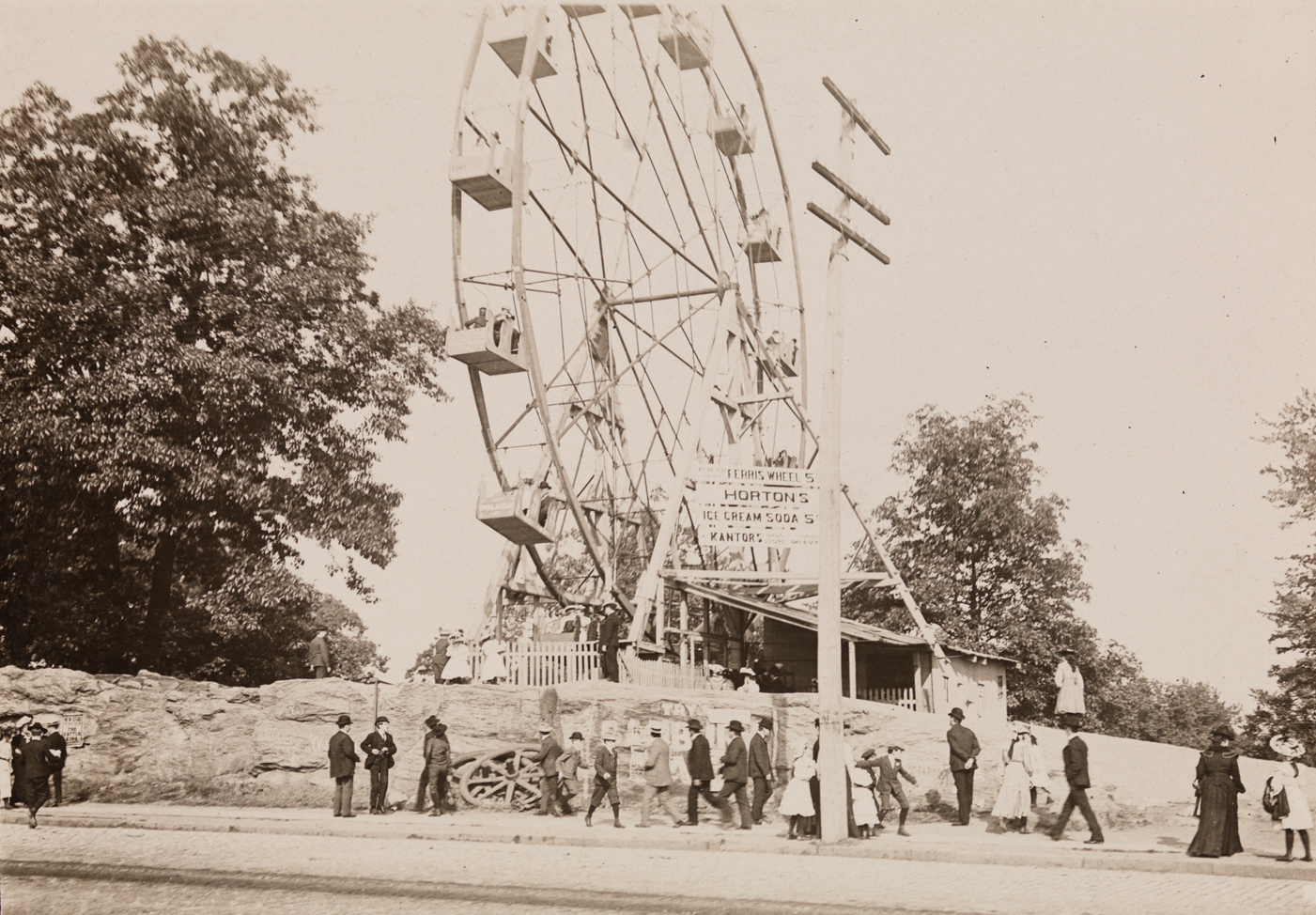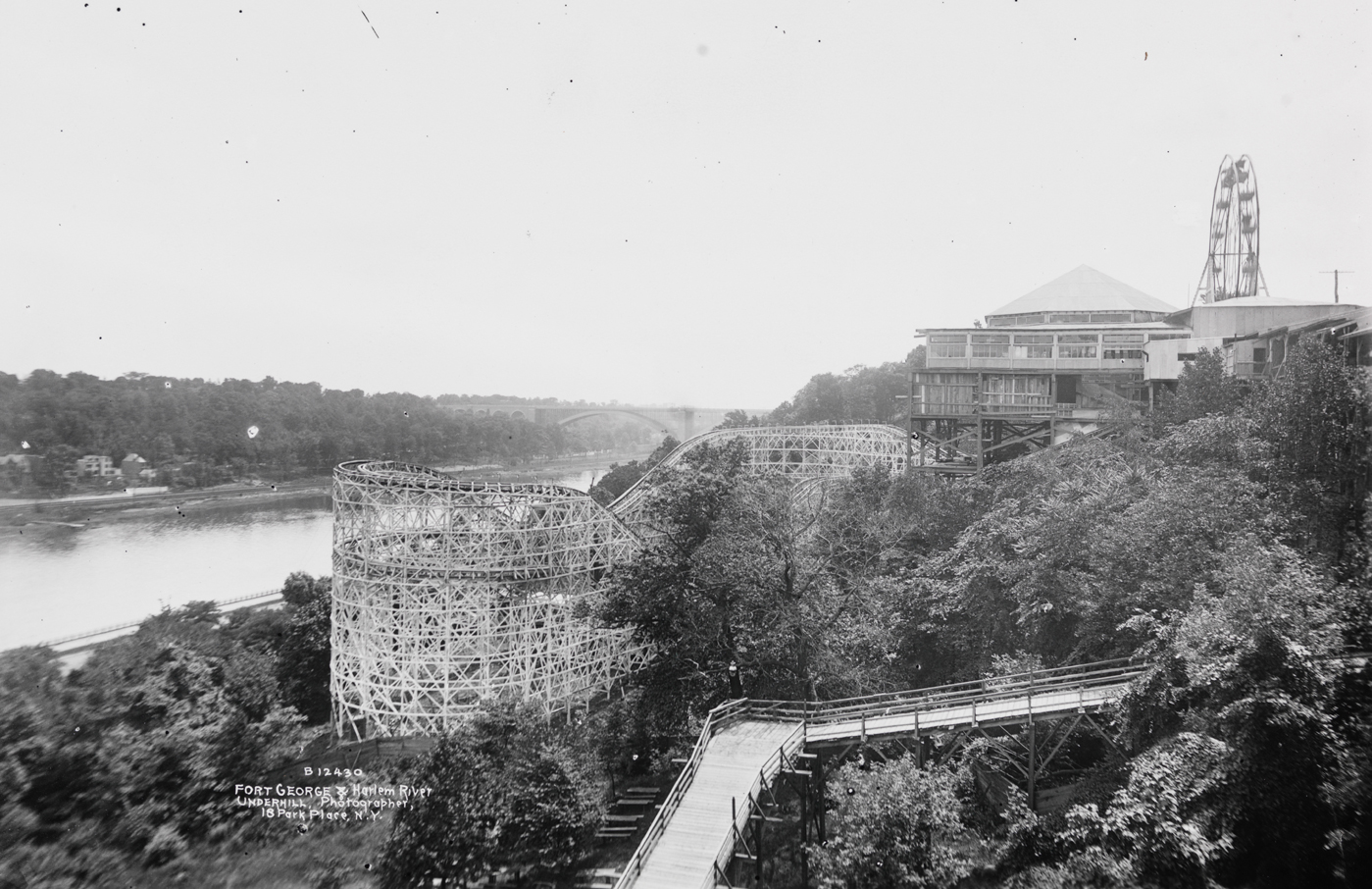Fort George Amusement Park
Monday, May 8, 2017 by
Over a century ago on the northernmost tip of Manhattan in Fort George, on the same spot where General Washington fought the British, there stood a fantastic amusement park complete with roller coasters, Ferris wheels, a skating rink, as well as fortune tellers, music halls, casinos, and hotels. The Fort George Amusement Park was located in what is now Highbridge Park, on Amsterdam Avenue between 190th and 192nd Streets.
In 1895, the park was built at the end of the Third Avenue Trolley line in order to draw Manhattan residents up to the breezy riverside neighborhood for summer recreation. Around this time, it was popular for trolley companies to develop “trolley parks,” a precursor to amusement parks, at the end of their lines in order to give people a reason to use their services on weekends. Other examples of this include Luna Park and Steeplechase Park in Coney Island, Brooklyn.
In 1905, Joseph Schenck and his brother Nicholas, who immigrated from Russia and settled in New York in 1893, visited the then small park and realized the amazing opportunity for development. They opened a saloon called “The Old Barrel” and partnered with Marcus Loew, a successful businessman who owned arcades and theaters. Loew later went on to form Loew's Theatres and the Metro-Goldwyn-Mayer film studio.
In 1906, the Schenck brothers built a new addition to the Fort George Amusement Park known as Paradise Park, which had an entrance fee of 10 cents at that time.
While the park prospered and was a popular destination for years, by 1910 local residents began to petition for it to close. The initial benefits to the local economy began to fade and the neighborhood became plagued by public drunkenness, noise, crime, and racial tensions. Local residents began to unify and pressure the authorities to condemn the park and surrounding saloons for fire code violations and safety hazards.
In December of 1911, an arsonist set fire to Paradise Park, but damages were repaired and it opened again in 1912. However, on June 9, 1913, another suspicious fire raged through the park causing over $100,000 worth of damages. The fire was so huge that some reports claimed that the flames could be seen as far south as 42nd Street.
After the devastating fire, community groups such as the Public Recreation Commission and the Parks and Playground Association moved to reclaim the area and bring the land under the jurisdiction of the city. Activist Lillian Wald led the charge as the acting president for the Parks and Playground Association. The property where the Fort George Amusement Park once stood was eventually condemned and the Parks Department officially acquired it and incorporated it in to Highbridge Park. Visit the online Collections Portal to explore more images of New York City’s amusement parks.
